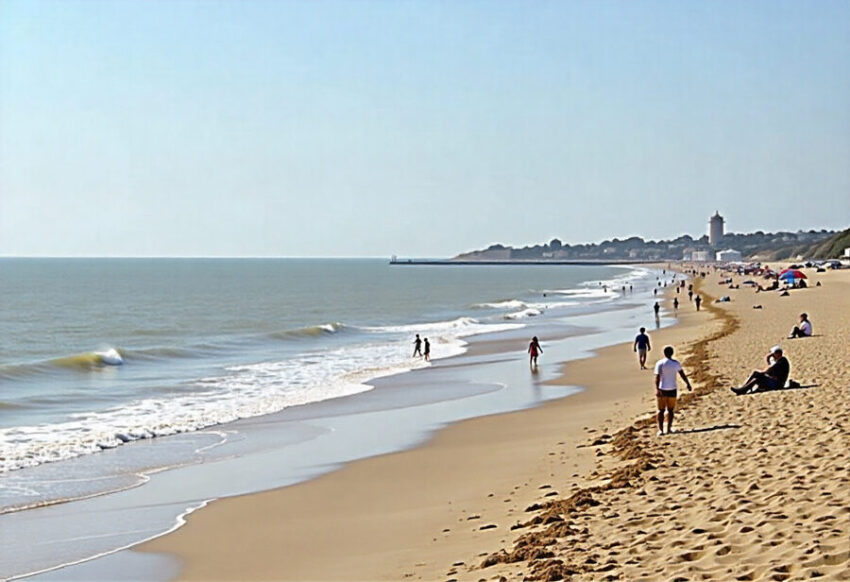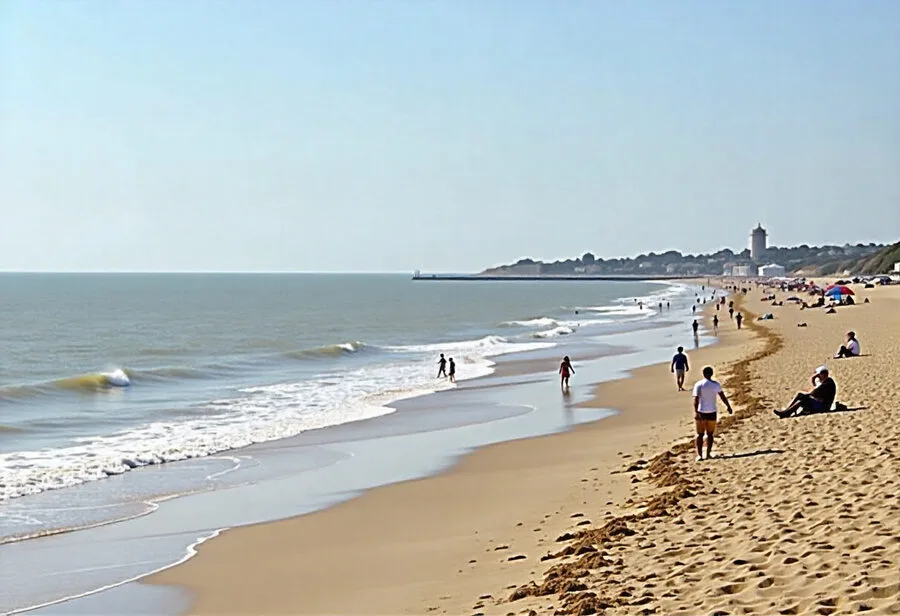Published on
August 14, 2025

The UK seaside, a firm favourite with holidaymakers in 2025 continues the lure of its age-old appeal and we welcome some new fun. Which is why the timeless pleasures of whiling away days on sandy shores and beside long-standing piers, indulging in ancient-seafront lollies -hyper-flavoured sticks or plates- still strike a chord with many, from old-schoolers to fun-loving families. And adds new-wave investments (improved amenities,theatrical events) trend-setting pursuits like holistic hideaways and immersive activities to make sure the shore remains relevant or millennials & digital nomads. This ideal mix of the familiar and the fresh will keep the UK seaside alive and well — simultaneously both reassuringly traditional yet thrillingly contemporary for future generations.
The traditional British seaside holiday, once symbolized by deckchairs, candy-flavored rock, and donkey rides on the sand, has evolved over time but still holds a special place in the hearts of many. As we reach 2025, its timeless appeal endures, albeit in a new form that reflects changing travel habits.
In the 1950s and 60s, following the post-war boom, families eagerly flocked to coastal resorts for long summer holidays, often lasting a week or two. Iconic destinations like Blackpool, Brighton, Scarborough, and Skegness became synonymous with the British beach vacation. These extended stays were the norm and helped cement the coast as the preferred holiday destination for many. However, as the years passed, the rise of affordable international package holidays, budget airlines, and the allure of city breaks began to lessen the prominence of the seaside getaway.
Today, the British coast still captivates visitors, though it now attracts a different kind of vacationer. The trend has shifted from extended breaks to shorter, more spontaneous visits. Recent tourism statistics show a decline in domestic overnight trips to coastal locations—from 12.5 million in 2023 to 11.1 million in 2024—coupled with a 4% drop in spending. However, day trips to the coast have been on the rise, signaling that people still cherish the seaside, albeit with less time and money spent there.
Financial considerations are a significant driving force behind this change. With the rising costs of accommodation, dining, and activities, longer stays have become less affordable. Additionally, low-cost flights to sunny destinations abroad have diverted attention from domestic coastal holidays. Yet, it’s not just about cost—there’s a cultural shift happening as well. Modern holidaymakers are drawn to flexible, bite-sized getaways rather than lengthy stays.
Certain coastal resorts have embraced these changing patterns with greater success than others. In Lincolnshire, resorts like Skegness and Mablethorpe still see a lot of traffic in the summer months, though many visitors are day-trippers. Hotels and guesthouses report a decrease in week-long bookings, while traditional seaside attractions such as arcades, mini-golf, and funfairs continue to thrive thanks to the influx of casual visitors.
Nationally, resorts that have adapted to these changes are faring better. Butlin’s, the legendary British holiday brand, continues to attract families with multi-day stays while also offering day passes to cater to shorter trips. In East Yorkshire, destinations such as Bridlington and Hornsea have found a balance between short-term visitors and longer stays, aided by new events, improved transport links, and upgraded facilities.
Even with these changes, the deep emotional connection to the British seaside endures. For countless generations, the coast has been associated with cherished memories—building sandcastles, exploring rock pools, and indulging in fish and chips by the shore. The nostalgia and sensory pleasures of fresh sea air and wide, open skies ensure that the seaside’s charm endures, even as the traditional holiday model fades.
Seasonality continues to be a challenge for coastal resorts, with business booming during summer but plummeting during the colder months. This fluctuation, compounded by rising operating costs, makes year-round offerings more important than ever. To address this, many resorts are diversifying by adding festivals, indoor activities, and wellness retreats to help spread the tourist traffic throughout the year.
Local councils and tourism bodies are also investing in the rejuvenation of the seaside. Modernization projects, including promenade upgrades, beach cleaning, and heritage restoration, are helping refresh traditional resorts. In addition, marketing strategies are increasingly focusing on promoting the seaside as a destination for a broader range of tourists—not just families, but couples, groups of friends, and solo travelers as well.
The UK seaside continues to attract visitors in 2025 with its blend of timeless charm and new attractions, from classic beach experiences to modern events and unique experiences, ensuring its appeal for both traditional and contemporary travelers.
While the Great British seaside holiday of 2025 may not resemble the extended stays of the past, its cultural significance remains unchanged. The experience may now be condensed into a quick weekend trip or a spontaneous day outing, but the essence of the seaside—sand, sea, and escape—remains intact.
The British coastline has proven to be remarkably resilient. It has weathered the challenges posed by international travel, shifting economic conditions, and evolving leisure trends. Today’s travelers are also finding ways to make their seaside escapes more affordable, with resources such as discount platforms providing savings on everything from hotel stays to dining. As a result, the British seaside remains a cherished destination, guaranteeing that generations to come will still find themselves packing their buckets, spades, and beach towels for a memorable escape to the coast.






